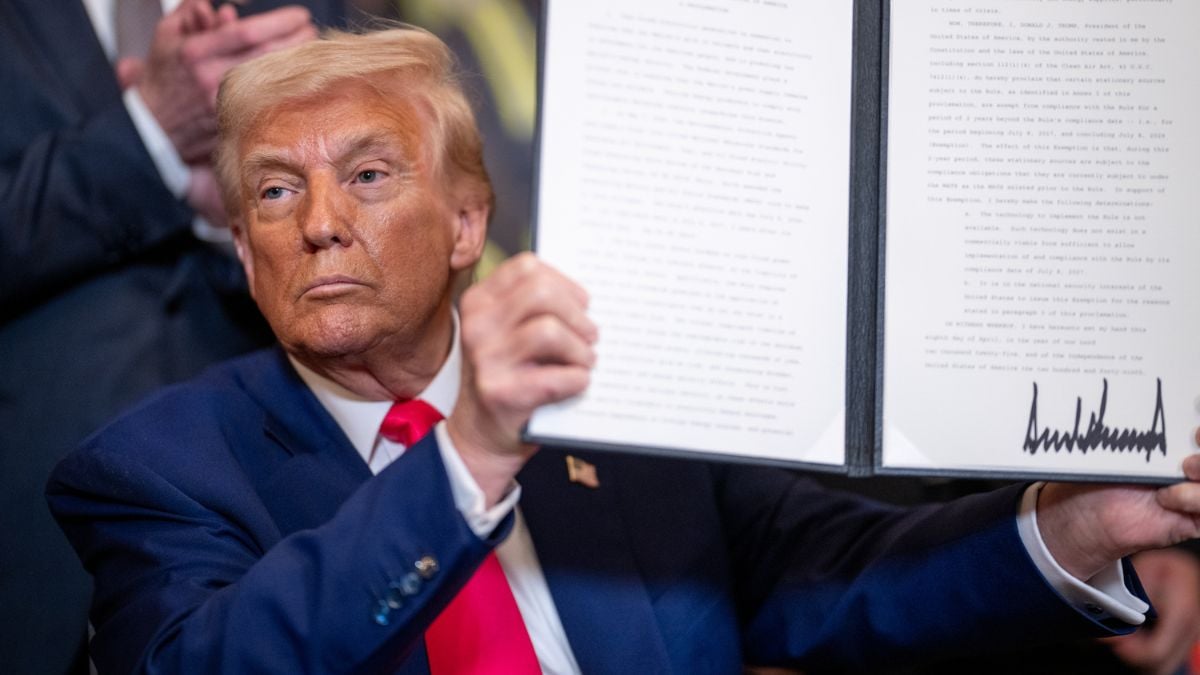
Since the beginning of Donald Trump’s second term, it has become common to say that we are facing a paradigm shift in the global economy, a return to protectionism spearheaded by the imposition of tariffs. But what lies behind these actions? In this regard, the president’s inner circle has begun circulating a new term: the Mar-a-Lago Accord.
What is the Mar-a-Lago Accord?
The so-called Mar-a-Lago Pact is not a formal treaty or bilateral agreement as its name might suggest. Instead, it is an economic concept that has started to circulate among Donald Trump’s advisors, his ideological allies, and major Wall Street investors. Its goal: to transform the role of the United States in the global economy through a series of radical measures that include devaluing the dollar, imposing aggressive tariffs, and restructuring public debt.
Although it has not yet become official policy, the term is already causing concern in financial circles. As analyst Jim Bianco, founder of Bianco Research, explained, “The Mar-a-Lago Accord is not really a thing, it’s a concept. It’s a plan to basically reform part of the financial system.”
READ ALSO. Nintendo delays Switch 2 reservations indefinitely due to tariffs: What we know
Why does Trump want to weaken the dollar?
Throughout his political career, Donald Trump has promoted a reindustrialization agenda, focused on bringing jobs back to American soil and reducing the trade deficit. In this new phase, his economic team believes that an overvalued currency —as the dollar has been— hinders exports.
The logic behind the Mar-a-Lago Accord is that a weaker dollar would make U.S. products cheaper in international markets, encouraging foreign purchases. This way, the United States would no longer need to inject public money to sustain its own economy: instead, foreign markets would drive it.
Put simply, the country would shift from being its own customer (buying “Made in USA” products) to becoming a supplier to the world.
How do tariffs fit into this strategy?
One of the core pillars of the Mar-a-Lago Accord is the strategic use of tariffs. According to this hypothesis, tariffs are not just a protectionist measure but a tool to pressure other countries.
The logic is this: if foreign nations want to avoid paying high tariffs to export their goods to the U.S., they would be forced to accept stricter conditions, such as exchanging Treasury bonds for long-term debt —up to 100 years— or investing in dollars under terms dictated by Washington.
Some experts have described the proposal as a “zero-sum game,” where concessions are not negotiated but forced under the threat of tariffs or even military support withdrawal.
READ ALSO. This is Donald Trump’s reciprocal tariffs chart
What are the implications for U.S. public debt?
One of the main challenges facing the United States is its high level of debt: 36.2 trillion dollars. Under the Mar-a-Lago Accord, the strategy would aim to reduce the fiscal burden without raising taxes or abruptly cutting social spending.
Proposed measures include:
- The creation of a U.S. sovereign fund, which could acquire foreign currencies to intervene in the dollar’s value.
- Public debt restructuring, by turning short-term bonds into long-term, illiquid financial instruments.
- Using U.S. geopolitical influence to force allied countries to increase defense spending or contribute to supporting the American economy through nontraditional financial mechanisms.
Why is it called the Mar-a-Lago Accord?
The name comes from the Mar-a-Lago estate, Donald Trump’s residence in Palm Beach, Florida.
This strategy draws inspiration from the 1985 Plaza Accord, signed by the United States, Japan, Germany, France, and the United Kingdom. At the time, the White House —under President Ronald Reagan— reached a consensus to weaken the dollar against other currencies to reduce the trade deficit.
The result was immediate: the dollar index dropped by nearly 40% over two years, and the U.S. trade deficit shrank by 72% by 1991. However, there were also unexpected consequences: a financial bubble in Japan fueled by internal stimulus, which eventually collapsed and led to decades of stagnation.
For now, the Mar-a-Lago Accord is gaining traction within Trump’s inner circle, and Wall Street analysts have already begun assessing its potential impacts on the dollar, debt markets, exports, and global monetary policy.
Who is behind this proposal?
The economic theory behind the Mar-a-Lago Accord has been pushed by key figures in Trump’s orbit. One of the foundational documents was drafted by Stephen Miran, Trump’s chief advisor on tariffs.
In November 2024, Miran published a draft outlining a roadmap to reform the global trade system. His assessment: the dollar has been persistently overvalued, causing structural imbalances that must be corrected through tariffs, monetary policy, and geopolitical pressure.
What risks does this plan pose for the global economy?
The plan has been heavily criticized by economists and political analysts. Analyst Róger Sen-serrich called the Mar-a-Lago Accord “madness,” arguing that a forced dollar devaluation could trigger a global spike in interest rates, increasing financing costs and harming economic recovery.
Moreover, the risk that other countries would impose retaliatory trade measures could hurt U.S. exports in the medium and long term, undermining the accord’s supposed benefits.
There is also concern about the potential for a stimulus-fueled financial bubble, similar to what Japan experienced in the 1980s during its post-Plaza Accord era.
Another alarming factor is that the current global economic landscape is very different from the one Reagan faced. Just considering China’s economic clout introduces a major variable that could destabilize Trump’s strategy.
What role do tariffs play in Trump’s fiscal policy?
Tariffs are one of the key tools proposed by the Trump administration to pressure other nations and change the rules of global trade. Under the Mar-a-Lago framework, their purpose goes beyond protecting local industries: they aim to create an environment in which the U.S. can restructure its debt and monetary policy with less international resistance.
This marks a significant shift in the role of tariffs, which are no longer just a revenue or protectionist mechanism, but a tool for structural transformation of the economic system.
With information from Bloomberg










